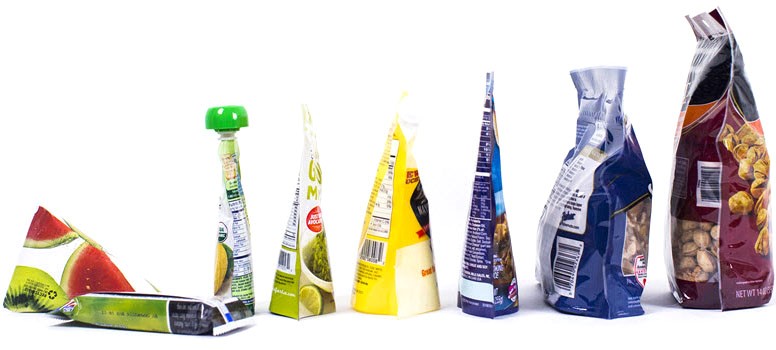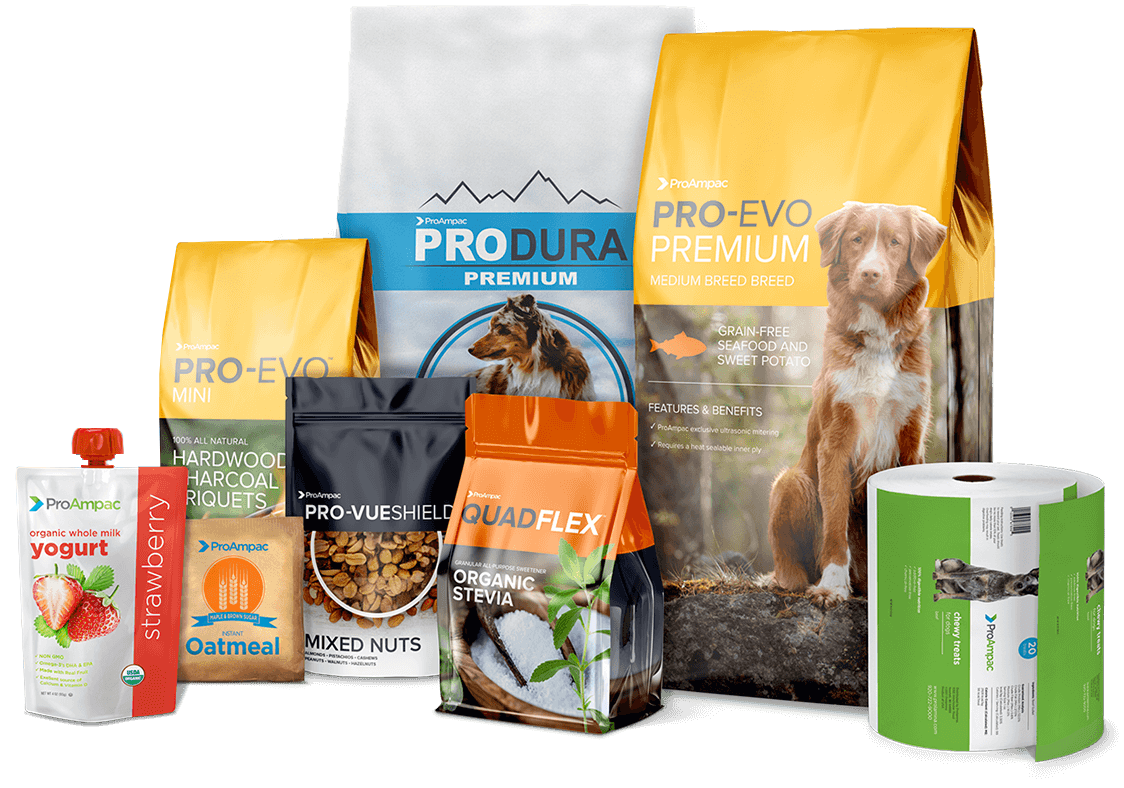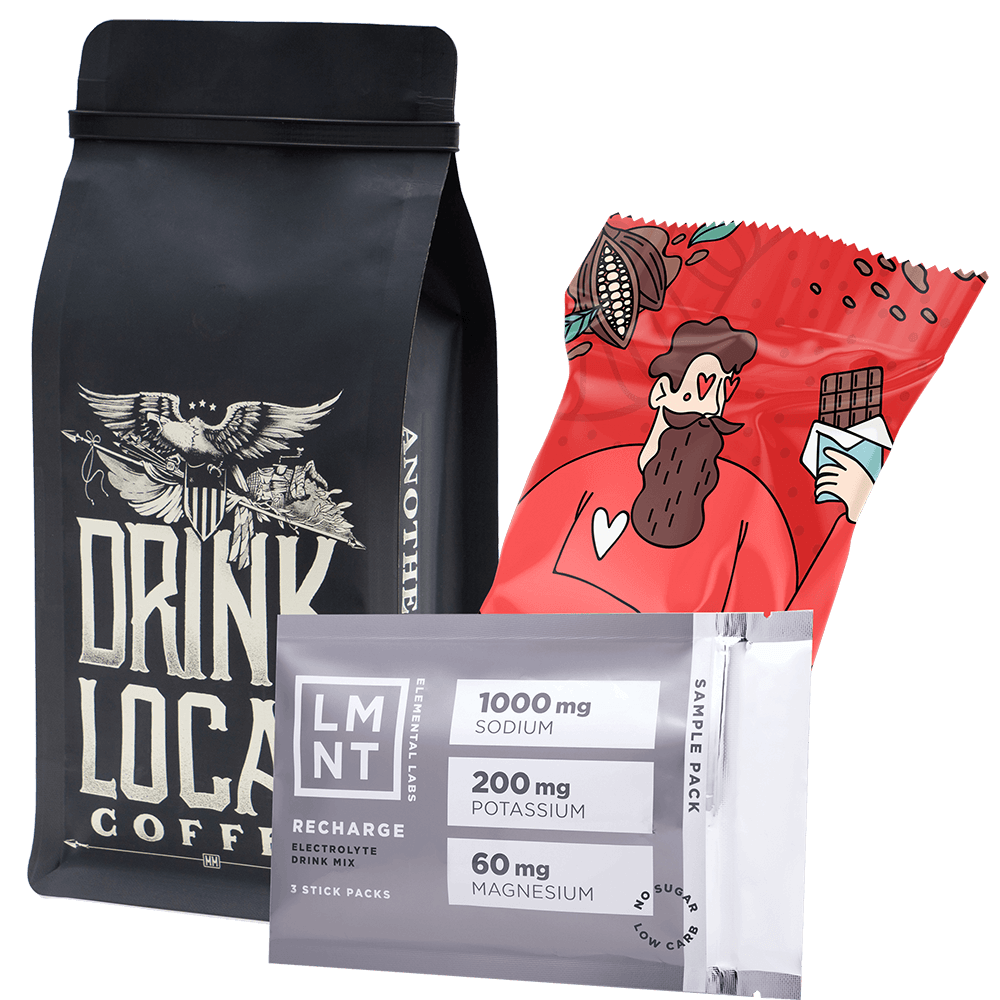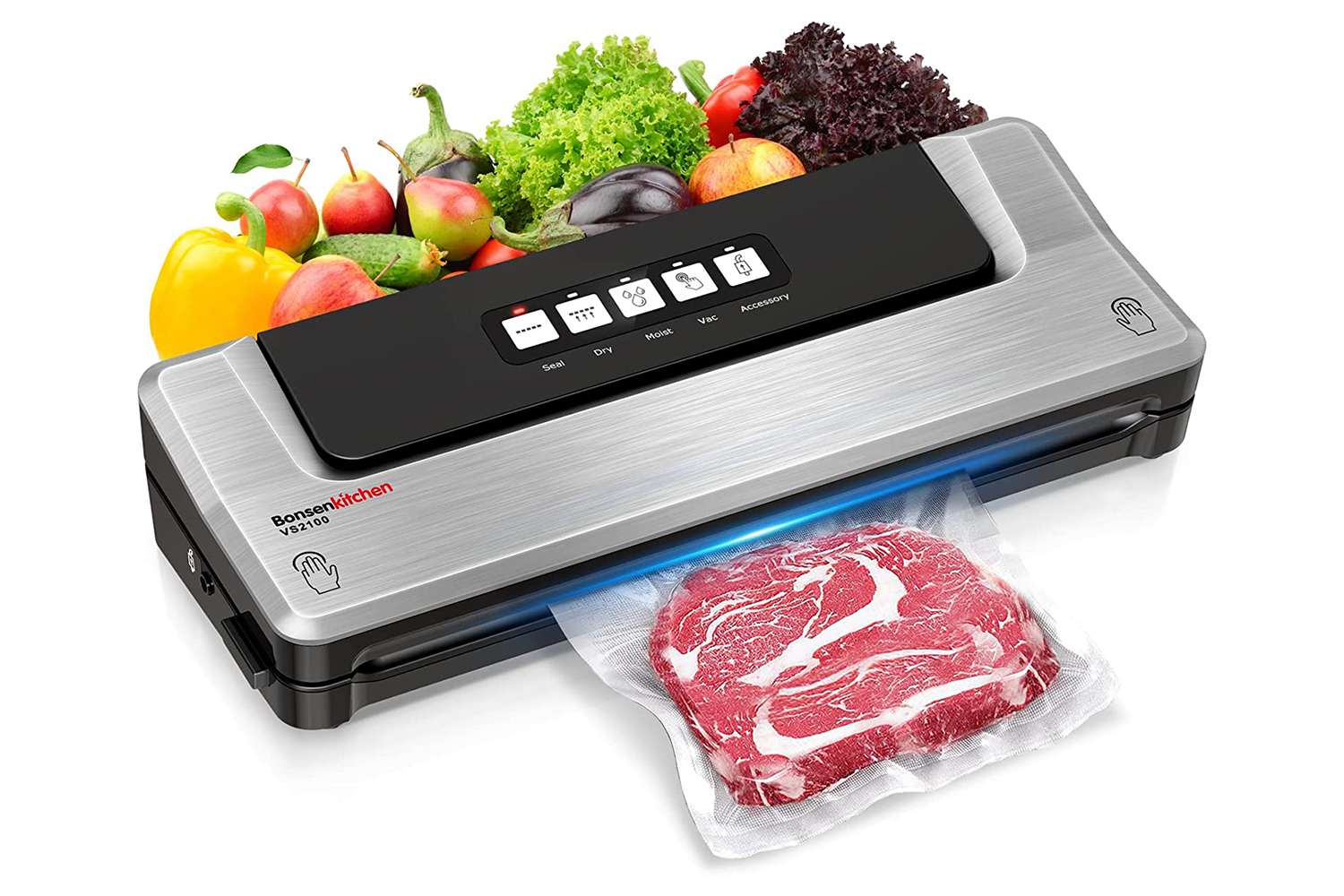Have you ever wondered how some foods stay fresh for so long? Or how businesses manage to ship perishable goods across continents without spoilage? A key technology behind this is vacuum packaging. This method dramatically extends the shelf life of food products by removing air, creating an environment that slows down degradation. Understanding vacuum packaging is crucial for businesses like food manufacturers, retailers, and even cosmetics companies looking for effective preservation solutions. This guide dives deep into the world of vacuum sealing, exploring how it works, its numerous benefits, the different types available, and essential tips for success. Whether you’re a procurement manager like Mark Thompson in the USA seeking reliable, high-quality packaging from suppliers like Allen’s factory in China, or simply curious about food preservation, this article will provide valuable insights into why vacuum packaging is a cornerstone of modern food packaging.
What Exactly is Vacuum Packaging and How Does it Work?
Vacuum packaging is a highly effective preservation technique used across the food industry and beyond. At its core, the process involves placing a product (usually food) into a specialized packaging material, typically a plastic pouch or bag, and then removing air from the package before sealing it tight. This removal of air is achieved using a vacuum pump integrated into a vacuum sealer or packaging machine. Once the desired level of vacuum is reached, the machine creates a strong seal on the pouch, preventing air from re-entering.
The fundamental principle behind vacuum packaging is creating an anaerobic environment (an environment without oxygen) inside the bag. By applying a vacuum, we significantly reduce the amount of oxygen surrounding the product. This lack of oxygen is the key factor that helps preserve the food. Different types of vacuum packaging machines exist, ranging from small countertop units for home use to large, automated systems for commercial use, capable of handling high volumes. The effectiveness of the vacuum packaging method depends on the quality of the vacuum sealer, the type of packaging material used, and the specific type of food being packed.
Invented by Dr. Karl Busch in the 1960s, this vacuum packaging technology revolutionized how we store and transport food items. The goal isn’t just to seal the food, but to create specific storage conditions that dramatically slow down the processes that cause food spoilage. Essentially, vacuum packaging puts the brakes on decay, keeping food fresher for longer periods compared to traditional storage methods like simple plastic wrap or containers. It’s a sophisticated yet straightforward preservation method.

Why is Removing Air So Crucial for Food Preservation?
Air, specifically the oxygen within it, is a major culprit when it comes to food spoilage. Oxygen fuels two primary degradation processes: oxidation and the growth of aerobic microorganisms. Oxidation is a chemical reaction that affects the flavour, color, and nutritional value of food. Think of a sliced apple turning brown – that’s oxidation at work. It can cause fats to become rancid, vitamins to degrade, and pigments to fade, leading to undesirable changes and off-flavours. Vacuum packaging minimizes the oxygen available, significantly slowing down these oxidative reactions and helping to maintain the food’s original quality.
Furthermore, many common spoilage organisms, including various types of bacteria and fungi, are aerobic, meaning they require oxygen to grow and multiply. These microorganisms break down food components, leading to spoilage, unpleasant odors, and potentially harmful toxins. By removing air and creating an anaerobic environment, vacuum packaging effectively inhibits the growth of these aerobic bacteria and molds. While it doesn’t sterilize the food or stop all microbial activity (some anaerobic bacteria can still thrive), it drastically reduces the proliferation of aerobic culprits that are often the fastest to cause spoilage. This is why vacuum packaging is such a powerful tool for food preservation.
The process of removing air is therefore central to the success of vacuum packaging. It directly combats the main factors – oxidation and microbial growth – that lead to food degradation. Reducing exposure to air helps maintain the freshness, flavour, texture, and appearance of food products for extended periods, making vacuum packaging an invaluable preservation technique for both commercial applications and home use. It’s a simple concept with profound effects on food preservation.
What are the Key Benefits of Using Vacuum Sealing for Food Products?
The advantages of vacuum packaging are numerous, making it a popular choice for storing food. One of the most significant benefits is the substantial extension of shelf life. By removing oxygen, vacuum sealing slows down spoilage processes, allowing food items like meat, cheese, poultry, coffee beans, and even leftovers to stay fresh much longer – often 3 to 5 times longer than conventional storage methods. This reduction in food spoilage translates directly into cost savings by minimizing waste.
Beyond extending shelf life, vacuum packaging offers excellent protection against freezer burn. Freezer burn occurs when moisture evaporates from the surface of frozen food due to exposure to air, resulting in dry, tough, and discolored patches. Because vacuum sealing creates an airtight barrier, it prevents this moisture loss and protects the texture and flavour of frozen foods. Vacuum-packed food stored in the freezer remains in much better condition compared to food stored in regular freezer bags or containers.
Other benefits of vacuum packing include:
- Improved Food Quality: Maintains freshness, flavour, color, and nutritional value by preventing oxidation and inhibiting the growth of spoilage organisms.
- Space Efficiency: Vacuum bags conform tightly to the shape of the food, reducing the storage space needed in refrigerators, freezers, or pantries compared to bulky containers.
- Portion Control & Convenience: Allows for easy portioning of bulk purchases. You can seal individual servings for quick meals or sous vide cooking.
- Marinade Enhancement: The vacuum process opens the pores of meat and poultry, allowing marinades to penetrate more quickly and deeply, resulting in better flavour.
- Protection: Provides a barrier against external contaminants, moisture, and odors. Vacuum packaging also protects non-food items from tarnish, corrosion, or moisture damage.
These many advantages make vacuum packaging a versatile and valuable tool for preserving a wide range of food products and other items, offering tangible benefits in terms of quality, cost, and convenience. This packaging system is truly revolutionary.
How Does Vacuum Pack Extend the Shelf Life of Different Foods?
The degree to which vacuum packaging extends shelf life varies depending on the type of food and the storage conditions (refrigerated, frozen, or pantry). However, the improvement is generally significant across the board because the core principle – removing oxygen to slow decay – applies broadly. Vacuum sealing inhibits the growth of bacteria, mold, and yeast that require oxygen, and it drastically reduces oxidation.
Consider fresh meat. Stored conventionally in the refrigerator, it might last only a few days. When vacuum-packed, fresh meat can often last up to two weeks in the refrigerator without significant loss of quality. This is because the anaerobic environment created by the vacuum pack slows the growth of aerobic bacteria that typically cause spoilage in meat. Similarly, cheese benefits greatly; hard cheeses can last for months when vacuum-sealed and refrigerated, compared to weeks otherwise.
Here’s a general comparison table illustrating the typical shelf life extension provided by vacuum packaging:
| Food Item | Conventional Storage (Refrigerator) | Vacuum Pack Storage (Refrigerator) | Conventional Storage (Freezer) | Vacuum Pack Storage (Freezer) |
|---|---|---|---|---|
| Meat (Beef, Pork) | 3-5 Days | 10-15 Days | 6 Months | 2-3 Years |
| Poultry | 2-3 Days | 7-10 Days | 9 Months | 2-3 Years |
| Fish | 1-2 Days | 4-6 Days | 6 Months | 2 Years |
| Hard Cheese | 1-2 Weeks | 4-8 Months | 6 Months | 1-2 Years |
| Coffee Beans | 2-3 Weeks (Pantry) | Months (Pantry) | 1-2 Months | 2-3 Years |
| Fresh Produce | Varies (Days-Weeks) | Varies (Often Doubled or Tripled) | Not Recommended (Generally) | Varies (Blanching Required) |
| Leftovers | 3-4 Days | 1-2 Weeks | 2-3 Months | 6-12 Months |
(Note: These are estimates. Actual shelf life depends on initial food quality, handling, specific type of food, and the quality of the vacuum seal.)
It’s clear that vacuum packaging dramatically extends shelf life for a wide range of food products, whether refrigerated, frozen, or stored at room temperature (like coffee beans or dried goods like cereals). This effective preservation makes it an invaluable technique. Vacuum packaging offers a reliable way to keep food fresher longer.

Can Vacuum Packaging Prevent Freezer Burn and Spoilage?
Yes, vacuum packaging is highly effective at preventing both freezer burn and reducing spoilage. These are two major challenges in food preservation, and vacuum sealing directly addresses the root causes of both problems, primarily the presence of air.
Freezer burn is essentially dehydration of the food surface caused by sublimation (ice turning directly into vapor) within the freezer environment. Air circulating around the food draws moisture out, leaving behind dry, tough, discolored patches that negatively impact texture and flavour. Vacuum packaging combats this by creating an airtight seal. By removing air from the packaging material before sealing, it minimizes the air pockets around the food. This lack of air prevents the moisture from escaping and protects the food from the drying effects of the cold freezer air, thus effectively preventing freezer burn. Vacuum-sealed food retains its moisture, texture, and taste far better during frozen storage.
Regarding spoilage, as discussed earlier, vacuum packaging works by creating an oxygen-poor environment. This directly inhibits the growth of aerobic bacteria and molds, which are common culprits in food spoilage. While it doesn’t eliminate all microbial activity (anaerobic organisms can still potentially multiply, especially if food isn’t stored at proper temperatures), it significantly slows down the overall decay process. By limiting the oxygen supply, vacuum packaging reduces the rate of oxidation and hinders the primary microorganisms responsible for breaking down food and causing off-flavours, odors, and textural changes. Therefore, it plays a crucial role in preventing premature spoilage and extending the usability of food products. Proper refrigeration or freezing is still essential in conjunction with vacuum packaging for perishable items.
Are There Different Types of Vacuum Packaging Systems Available?
Yes, there are several types of vacuum packaging systems, catering to different needs, from home kitchens to large-scale industrial operations. The main types include external clamp (or suction) vacuum sealers, chamber vacuum sealers, and specialized industrial vacuum packaging machines. Understanding these options helps businesses choose the right packaging system for their specific requirements.
External Clamp Vacuum Sealers: These are the most common type found in households and small businesses. They work by placing the open end of a special textured vacuum bag into the machine’s clamp. The machine then sucks the air from the packaging through small channels in the bag before heat-sealing it.
- Pros: Generally more affordable, compact, easy to use.
- Cons: Require special textured bags (which can be more expensive), may not achieve as high a vacuum level as chamber sealers, can struggle with liquids (liquid can be sucked into the vacuum pump).
Chamber Vacuum Sealers: These are more common in commercial settings like restaurants, food processing plants, and businesses requiring high-volume vacuum packaging. The entire pouch (including the product) is placed inside a chamber. The machine removes the air from the entire chamber, equalizing the pressure inside and outside the bag. This prevents liquids from being sucked out of the bag during the vacuum process. Once the air is evacuated, a sealing bar inside the chamber seals the pouch.
- Pros: Can achieve higher vacuum levels, works well with liquids and powders, can use smoother (less expensive) vacuum bags, often faster for multiple packages.
- Cons: Larger, heavier, significantly more expensive than external sealers.
Industrial Vacuum Packaging Machines: For very large-scale operations, specialized machines like thermoformers or rotary vacuum packaging machines are used. Thermoformers shape the packaging material from rolls, fill it with the product, draw a vacuum, and then seal it. These are highly automated systems designed for maximum throughput in the food industry. Allen’s factory, for example, specializes in producing a wide variety of flexible packaging pouches suitable for these diverse vacuum packaging systems, including options like Popular China Eco Friendly Packaging Nozzle Pouch Bags which are ideal for liquids.
The choice of vacuum sealer or packaging system depends heavily on the volume of packaging needed, the types of products being sealed (especially liquids vs. solids), budget constraints, and the desired level of vacuum and seal integrity. Each type of food might benefit from a specific vacuum packaging approach.

What Should Businesses Consider When Choosing Vacuum Packaging Materials?
Selecting the right packaging material is just as crucial as choosing the right vacuum sealer. The material must be able to withstand the vacuum process, provide an effective barrier against oxygen and moisture, ensure a strong seal, and be appropriate for the specific food product being packaged. Businesses, especially those like Mark Thompson’s concerned with quality and brand image, need to consider several factors.
Key considerations include:
- Barrier Properties: The primary function is to keep air out after sealing. Materials need excellent oxygen barrier properties to maintain the vacuum and prevent oxidation. Moisture barrier properties are also vital to prevent dehydration (freezer burn) or moisture ingress. Different materials (like EVOH, Nylon, PET) offer varying levels of barrier protection.
- Sealability and Durability: The material must be used to create a strong, reliable heat seal that won’t fail under pressure or during handling and storage. It also needs to be durable enough to resist punctures or tears, especially for products with sharp edges (like bones in meat). Material thickness plays a role here.
- Food Safety Compliance: For food packaging, materials must comply with relevant food safety regulations (e.g., FDA, EU standards). This ensures no harmful chemicals leach into the food products. Suppliers should provide documentation confirming compliance.
- Product Compatibility: The packaging material shouldn’t react with the food. For example, acidic foods might require different materials than fatty foods. Clarity might be important for retail appeal, while some products might require opaque materials to protect against light.
- Machine Compatibility: As mentioned, external vacuum sealers typically require specific channeled or textured bags/rolls, while chamber sealers can use smoother, often more economical, pouches. Ensure the chosen material works with your packaging machine.
- Sustainability: Increasingly important, especially for brands targeting environmentally conscious consumers. Options are available for recyclable or even compostable vacuum packaging materials. Businesses should inquire about sustainable packaging options like those potentially offered by suppliers focusing on 100% Green Types of Sustainable Food Packaging Flexible Pack.
- Cost: Material costs vary significantly based on type, thickness, barrier properties, and features (e.g., zippers, tear notches). Balancing performance with budget is key.
- Printability: For branded products, the material must be suitable for high-quality printing to display logos, nutritional information, and branding accurately and vibrantly – a key concern for buyers like Mark.
Consulting with an experienced packaging supplier, like Allen’s factory which offers diverse pouch styles including Plastic For Packaging Three-Side Seal Pouch suitable for vacuum applications, can help businesses navigate these considerations and select the optimal packaging material for their specific needs.
How Does Vacuum Sealing Compare to Other Preservation Methods?
Vacuum sealing is a powerful preservation method, but it’s often used in conjunction with other techniques like refrigeration, freezing, canning, or drying. Each method has its strengths and weaknesses.
- Refrigeration: Slows down microbial growth and enzymatic activity but doesn’t stop it. Shelf life is limited. Vacuum sealing before refrigeration significantly extends this limited shelf life by removing oxygen.
- Freezing: Stops most microbial growth by lowering temperature and making water unavailable. However, it can cause texture changes and is susceptible to freezer burn if not packaged properly. Vacuum sealing before freezing drastically reduces freezer burn and helps maintain quality for much longer periods.
- Canning: Uses heat to destroy microorganisms and enzymes, then seals the food in an airtight container. Provides very long shelf life at room temperature. However, the high heat can alter texture and nutritional content more significantly than vacuum sealing combined with freezing/refrigeration. Vacuum sealing itself doesn’t involve the same high heat processing.
- Drying/Dehydration: Removes moisture, making it difficult for microorganisms to grow. Effective for long-term pantry storage. Vacuum sealing after drying helps protect dried foods from moisture reabsorption and oxidation, preserving crispness and preventing staleness.
- Modified Atmosphere Packaging (MAP): Similar to vacuum packaging but involves altering the gas mixture inside the package (e.g., flushing with nitrogen or carbon dioxide) instead of just removing air. Often used for fresh produce or ready-to-eat meals to control specific spoilage mechanisms. Vacuum packaging is generally simpler and focuses solely on removing air.
Vacuum sealing stands out for its ability to significantly extend shelf life while minimally impacting the food’s original texture and nutritional value, especially when combined with refrigeration or freezing. It directly combats oxidation and aerobic bacteria, major factors in the degradation of fresh and frozen foods. While canning offers longer room-temperature stability, vacuum packaging often provides superior quality preservation for refrigerated or frozen items and is excellent protection for dried goods. It offers a balance of effectiveness, convenience, and quality preservation.
Essential Tips for Effective Vacuum Packing (Dos and Don’ts)
Achieving the best results with vacuum packaging requires attention to detail. Following best practices ensures a good seal, maximizes shelf life, and maintains food safety. Here are some essential tips for vacuum packing:
Dos:
- DO Use the Right Bags/Pouches: Ensure you’re using vacuum bags or pouches designed for your specific type of vacuum sealer (textured for external, smooth for chamber) and appropriate for the food product.
- DO Leave Enough Headspace: Leave at least 2-3 inches of space between the food and the top edge of the pouch to ensure a clean, strong seal.
- DO Ensure the Seal Area is Clean and Dry: Wipe the inside sealing area of the pouch before placing it in the vacuum sealer. Any moisture, grease, or food particles can compromise the seal.
- DO Pre-freeze Liquids and Soft Foods: For soups, stews, or very soft items, pre-freeze them partially (until firm) before vacuum sealing to prevent liquids from being drawn into the machine (especially with external sealers) and to maintain shape.
- DO Blanch Vegetables Before Freezing: Blanching (briefly boiling then plunging in ice water) stops enzyme activity that can cause loss of flavour, color, and texture, even in a vacuum. Blanch, cool, dry thoroughly, then vacuum pack for freezing.
- DO Double Seal If Necessary: For long-term storage or items prone to leakage, consider using the seal function twice for extra security.
- DO Label and Date Packages: Clearly label each vacuum-packed item with the contents and the date it was sealed. This helps with inventory management and ensures older items are used first.
- DO Store Properly: Remember that vacuum packaging slows spoilage but doesn’t eliminate the need for proper storage. Perishable foods must be used with refrigeration or freezing.
Don’ts:
- DON’T Overfill the Bag: This makes it difficult to get a good vacuum and a reliable seal.
- DON’T Vacuum Seal Certain Raw Vegetables or Fungi: Raw vegetables from the cruciferous family (broccoli, cauliflower, cabbage, Brussels sprouts) and raw mushrooms can release gases after sealing, causing the bag to expand. Blanch them first. Raw garlic and onions can also pose risks due to anaerobic bacteria potential if not stored correctly after vacuum sealing.
- DON’T Vacuum Seal Soft Cheeses: Very soft or fresh cheeses (like ricotta, cottage cheese, unpasteurized cheeses) don’t typically benefit from vacuum packaging and can be crushed or spoil differently due to anaerobic conditions.
- DON’T Assume Vacuum Sealing Makes Shelf-Stable Foods Indefinitely Stable: While it extends shelf life, monitor even pantry items for quality over time.
- DON’T Reuse Bags That Held Raw Meat, Fish, or Poultry without thorough sanitization, although it’s generally safer to discard them.
Following these guidelines will help you master vacuum sealing food effectively and safely.

Is Vacuum Packaging Right for My Business?
For many businesses, particularly those dealing with food products, cosmetics, or items sensitive to air and moisture, vacuum packaging offers compelling advantages. If you’re a business owner or procurement manager like Mark Thompson, evaluating whether this packaging system fits your needs involves considering factors like product type, scale, cost, quality requirements, and market demands.
Vacuum packaging is particularly beneficial if your business faces challenges with:
- Product Shelf Life: If extending the shelf life of your perishable goods is critical for reducing waste, expanding distribution reach, or improving inventory management, vacuum packaging is a proven solution.
- Maintaining Quality: For products where freshness, flavour, color, and texture are key selling points (meat, coffee beans, gourmet foods), vacuum packaging helps preserve these attributes by preventing oxidation and spoilage.
- Freezer Burn: If you sell frozen products, vacuum sealing provides superior protection against freezer burn, ensuring customers receive a high-quality item.
- Shipping and Storage Efficiency: The compact nature of vacuum-packed items can lead to savings in storage space and potentially shipping costs.
- Portioning and Convenience: Offering pre-portioned, vacuum-sealed products can appeal to consumer demand for convenience.
However, considerations like Mark’s pain points must be addressed. The initial investment in vacuum sealing equipment (especially chamber or industrial machines) can be substantial. Sourcing reliable, high-quality packaging material is crucial – inconsistent seal integrity, poor barrier properties, or subpar print quality can negate the benefits and damage brand reputation. Finding a supplier like Allen’s factory, which understands the need for consistent quality, accurate printing, reliable sealing, competitive pricing, and potentially sustainable packaging options, is vital. Addressing concerns about lead times impacting product launches is also essential when working with international suppliers.
Ultimately, if preserving product quality, extending shelf life, reducing waste, and potentially enhancing brand image through better packaging are priorities, then vacuum packaging is likely a very suitable and worthwhile investment for your business. The advantages of vacuum technology are hard to ignore in today’s competitive market.
Key Takeaways on Vacuum Packaging:
- Core Function: Vacuum packaging removes air from a package before sealing it to create an anaerobic environment.
- Primary Benefit: Significantly extends the shelf life of food products by slowing down oxidation and inhibiting the growth of aerobic bacteria and molds.
- Quality Preservation: Helps maintain the original freshness, flavour, color, and texture of food, especially effective against freezer burn.
- Mechanism: Works by reducing oxygen, which fuels spoilage and degradation processes.
- Types: Systems range from external clamp sealers for home/small business use to chamber sealers and industrial machines for commercial applications.
- Materials Matter: Choosing the right packaging material (pouch or film) with appropriate barrier properties, durability, and sealability is crucial for effectiveness and food safety. Consider sustainable options are available.
- Best Practices: Proper technique (headspace, clean seal area, pre-freezing liquids, blanching veggies) is essential for optimal results.
- Business Value: Offers significant advantages in reducing waste, improving product quality, enhancing storage efficiency, and meeting consumer demands, provided quality equipment and materials are used. Consulting with expert suppliers like A Leading Packaging Solutions And Machinery Supplier is recommended.
Post time: 04-15-2025

